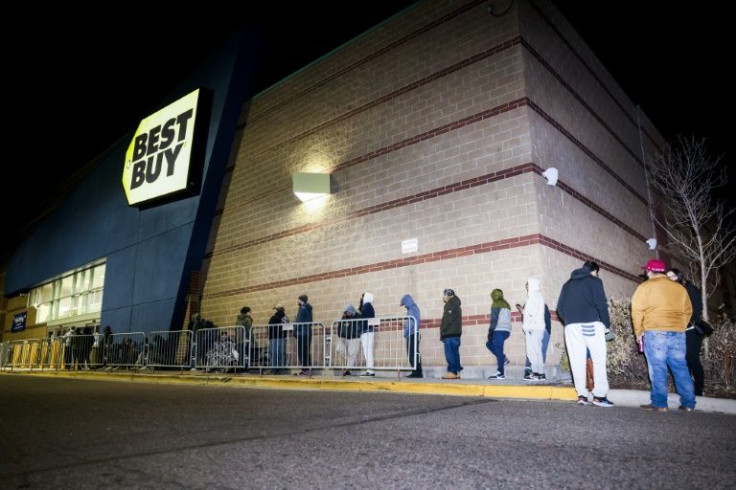Many US Consumers Got Head Start On 'Black Friday'
"Black Friday" has kicked off with a new batch of "doorbuster" sales and promotions, but online shopping data show that US consumers have already been spending big for weeks.
The day after the US Thanksgiving celebration is the traditional start to the holiday shopping season, and sees Americans line up outside stores before they open to clinch deals on popular items.
E-commerce shoppers in the United States have already spent $76 billion since early November, up more than 20 percent from the year-ago period, according to data from software company Adobe.
The jump has added to retailer optimism about the season, suggesting some shoppers heeded calls from chains to purchase items early this season after port backlogs and other supply chain problems prompted worries earlier in the fall about widespread shortages.
Toys led the buying spree, jumping some 261 percent compared with November 2019, with Adobe pointing to actions by "anxious parents increasingly aware of supply chain challenges."

The National Retail Federation projects overall spending could rise as much as 10.5 percent to $859 billion.
Retailers and market watchers are broadly optimistic about the holiday shopping season in light of low unemployment and relatively strong household finances, due in part to US pandemic relief programs.
Countering those positive trends are spiking consumer prices that have affected household staples such as food and fuel, and lingering supply chain problems that are leading to frequent "out of stock" notices on websites and in shopping aisles.
Another wildcard has been Covid-19. On Friday, global stock markets tumbled on worries the latest strain of the virus found in South Africa could derail the global recovery.
To navigate these difficult conditions, retailers have taken extraordinary steps such as importing and storing items earlier than usual, ordering shipments by air freight and in some cases even chartering their own vessels.
But chains have had mixed results when it comes to ensuring supply, with big box stores such as Walmart and Target building inventories, but some other outlets such as Gap and Nordstrom reporting lost sales due to gaps in their stock.
© Copyright AFP 2024. All rights reserved.











